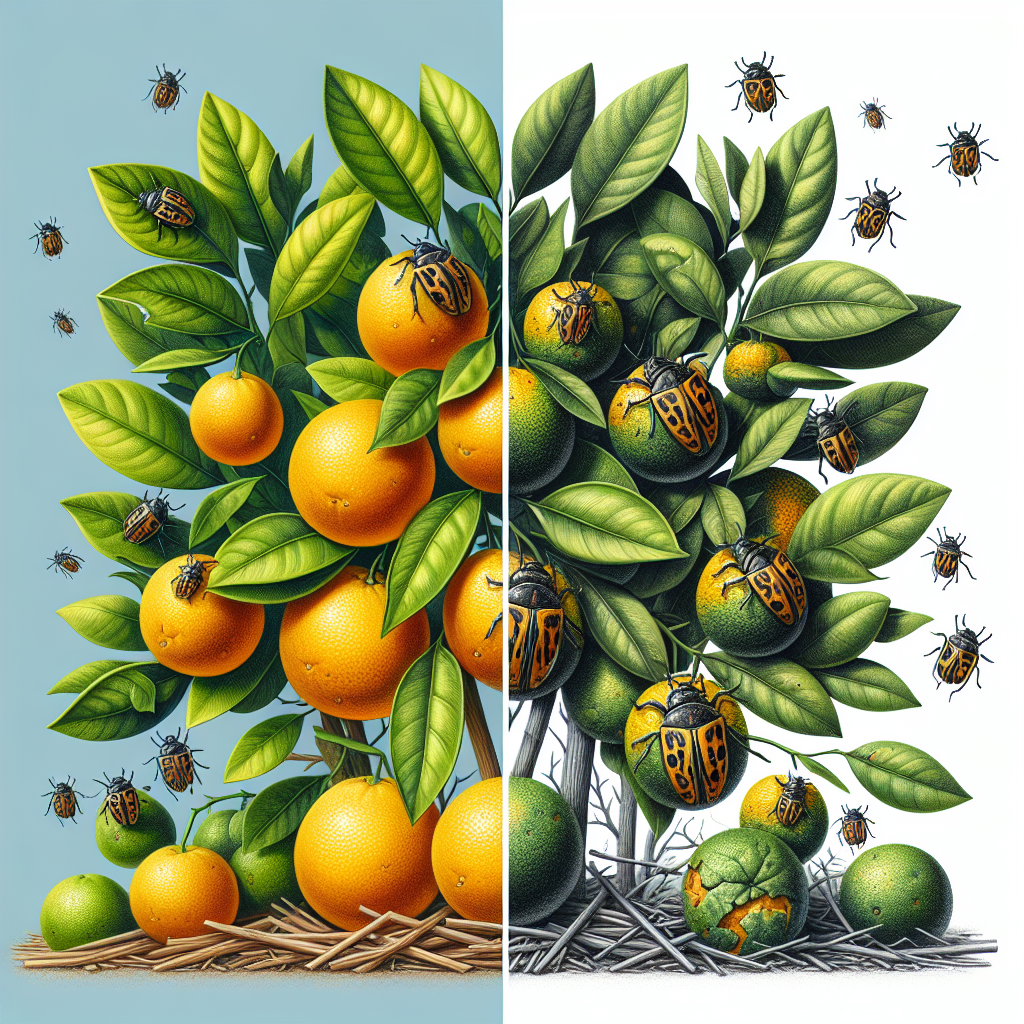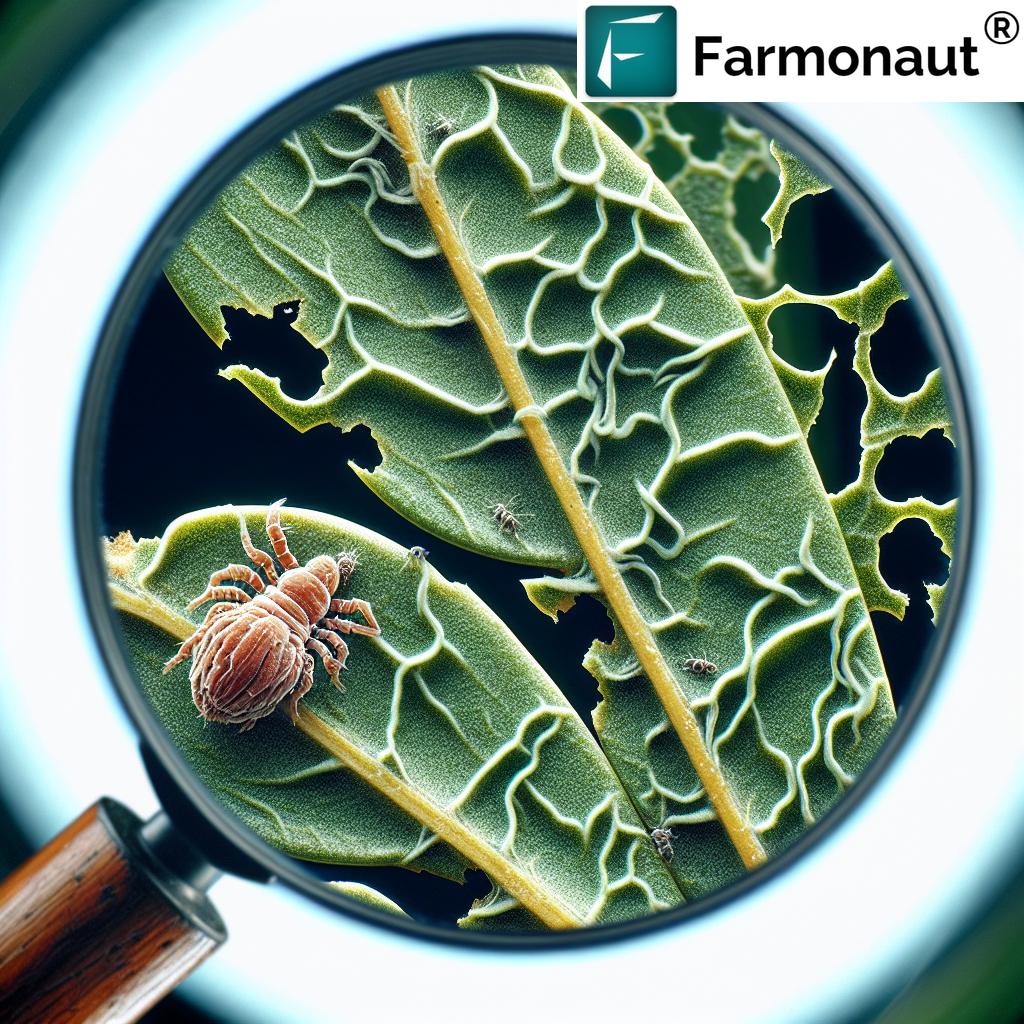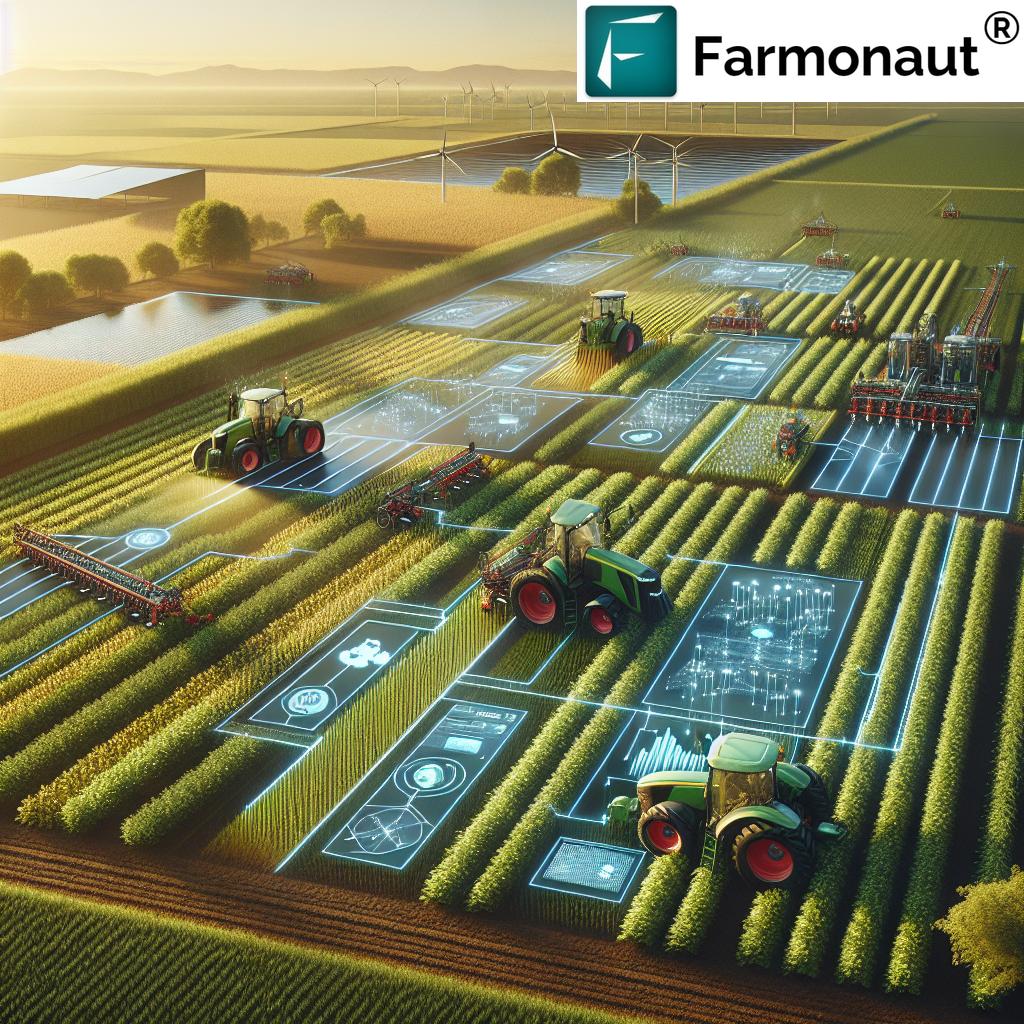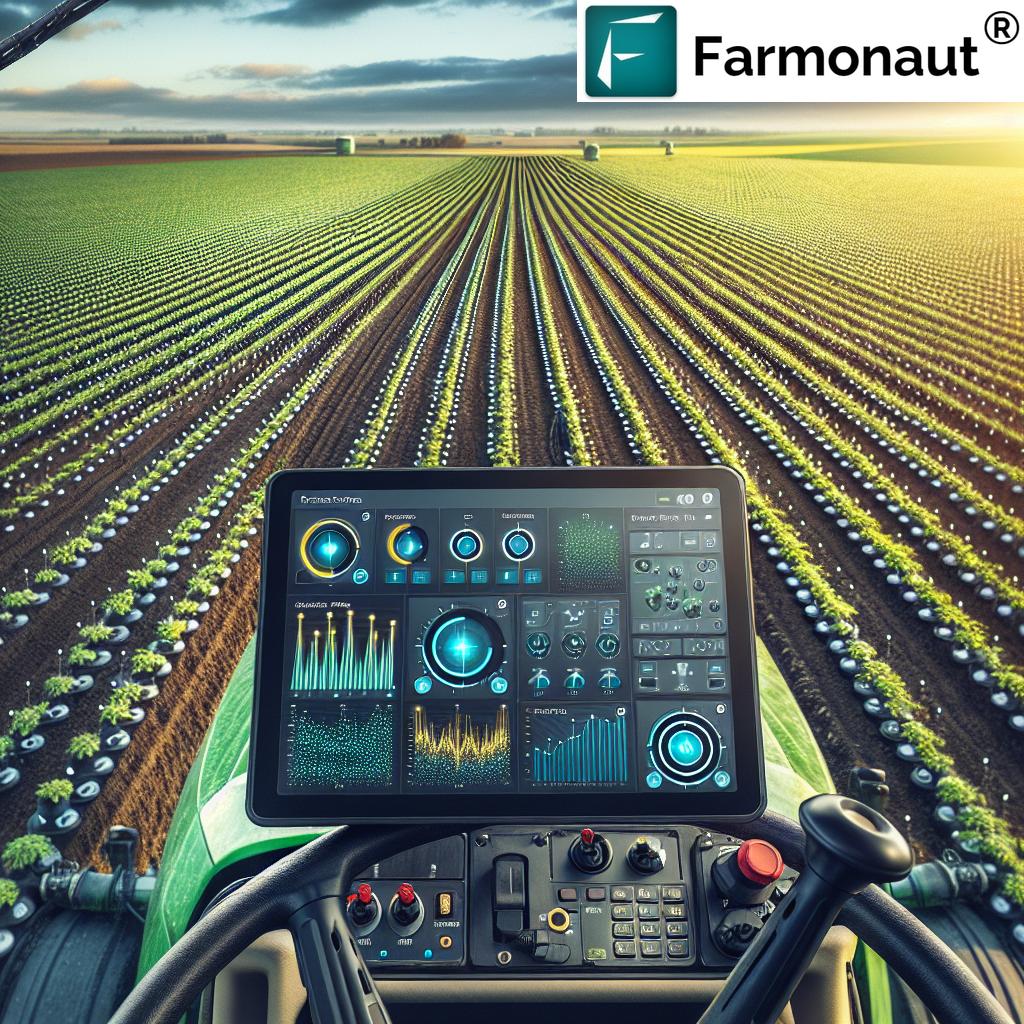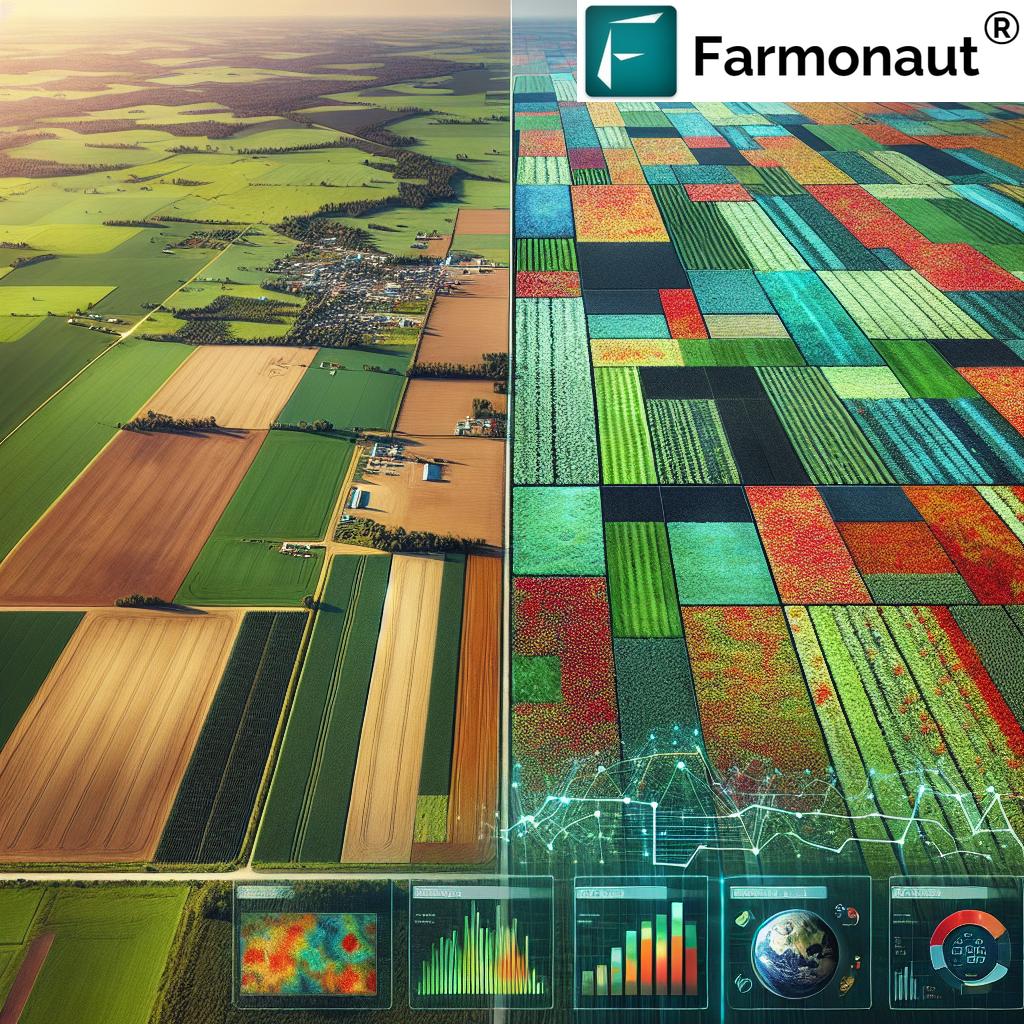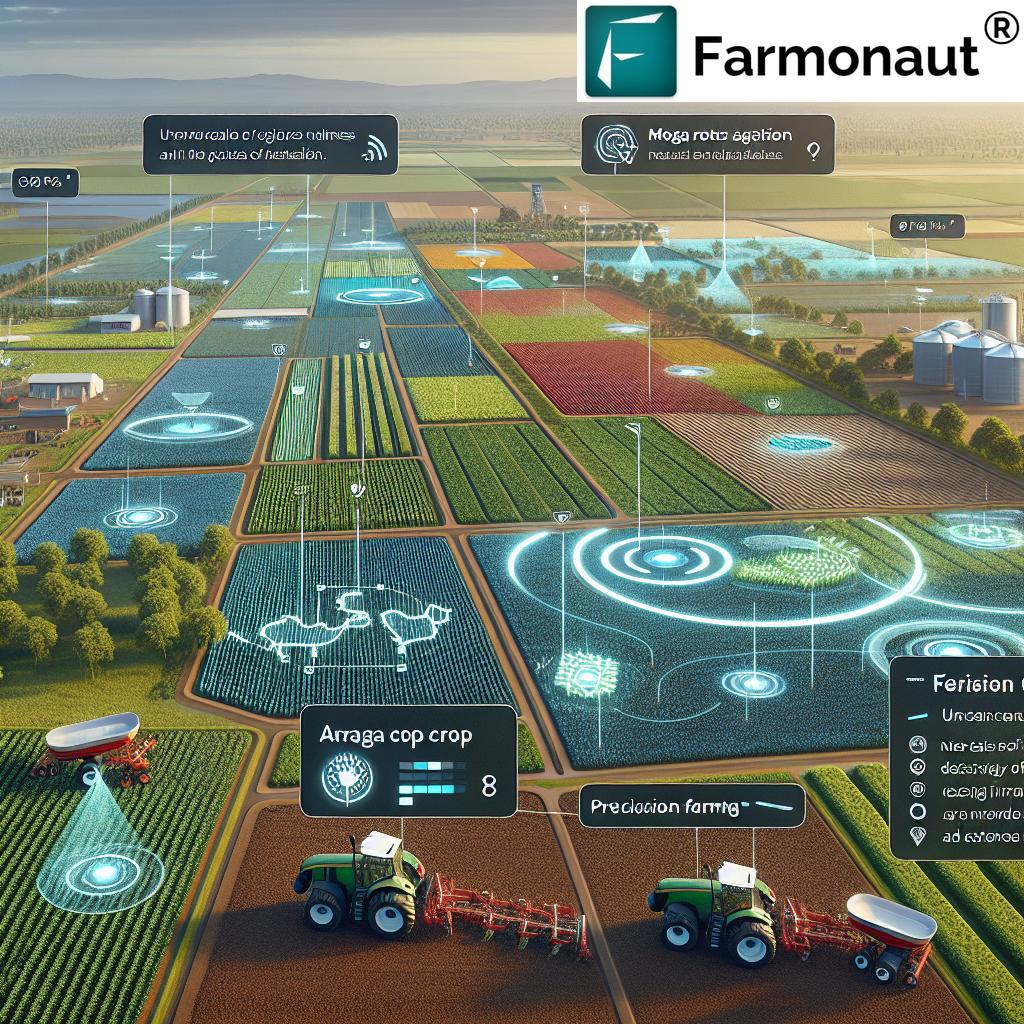Revolutionize Your Ranch: Master Rotational Grazing for Sustainable Cattle Production with Farmonaut’s Precision Ag Tools
“Rotational grazing can increase pasture productivity by up to 200% compared to continuous grazing systems.”
Welcome to the future of sustainable ranching! We’re excited to dive into the world of rotational grazing systems and explore how modern precision agriculture technology is transforming cattle farm management. In this comprehensive guide, we’ll uncover the secrets to optimizing pasture health, boosting farm productivity, and implementing smart livestock management techniques that benefit both your cattle and your land.
At Farmonaut, we’re passionate about making precision agriculture accessible to farmers worldwide. Our innovative satellite-based farm management solutions are designed to integrate seamlessly with traditional farming practices, helping you make data-driven decisions that enhance your ranch’s efficiency and sustainability.
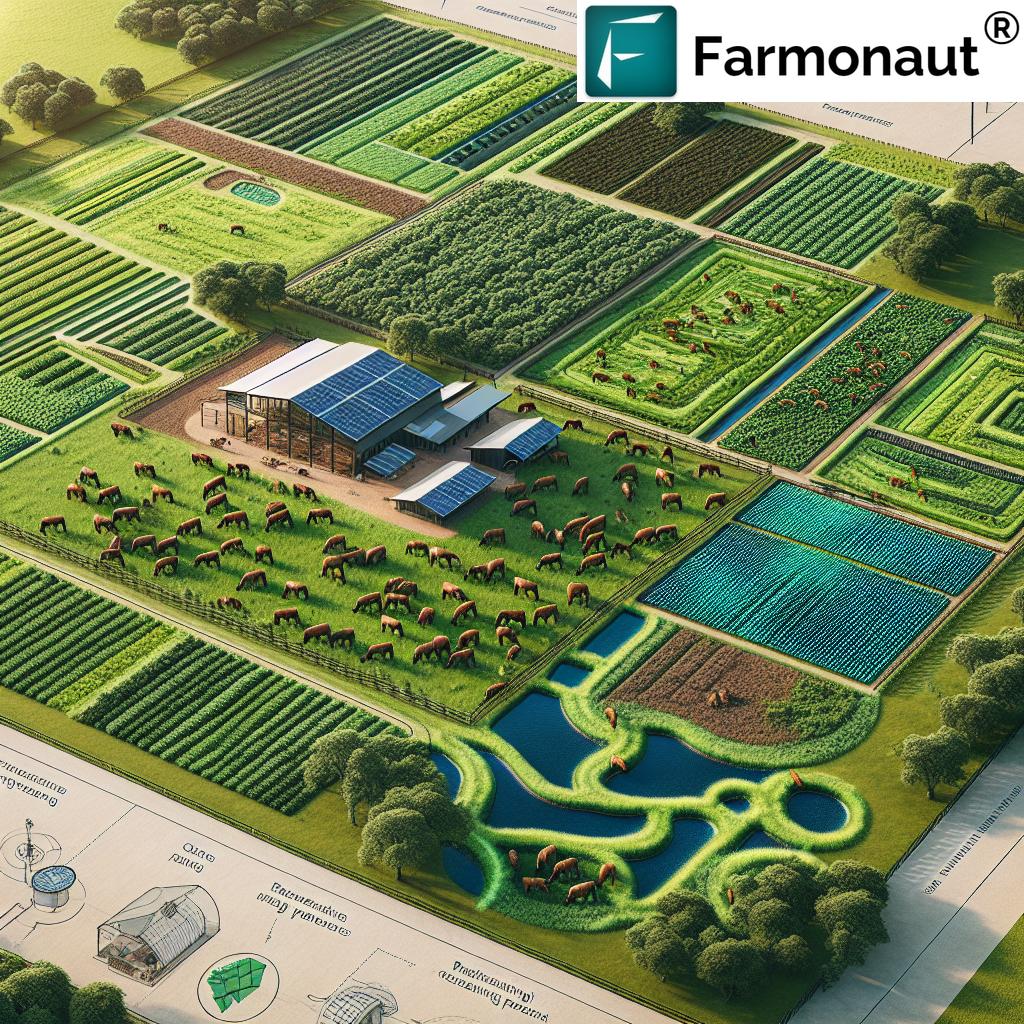
Understanding Rotational Grazing: A Game-Changer for Sustainable Ranching
Rotational grazing is a strategic approach to pasture management that involves dividing grazing land into smaller paddocks and systematically moving cattle between them. This practice allows for controlled grazing periods followed by rest periods, enabling optimal forage regrowth and soil recovery. Let’s explore the key components and benefits of this system:
- Improved Pasture Health: By preventing overgrazing in any one area, rotational grazing promotes healthier, more diverse plant growth.
- Enhanced Soil Quality: Regular movement of cattle helps distribute manure evenly, improving soil fertility and structure.
- Increased Forage Production: Proper rest periods between grazing allow plants to recover fully, leading to higher overall forage yields.
- Better Livestock Health: Access to fresh, high-quality forage contributes to improved cattle health and productivity.
- Reduced Feed Costs: Maximizing pasture utilization can significantly decrease the need for supplemental feeding.
Implementing a successful rotational grazing system requires careful planning and management. This is where Farmonaut’s precision agriculture tools come into play, offering invaluable support for farm planning with aerial imaging and smart resource management.
Essential Components of Rotational Grazing Systems
To help you understand the key elements of a successful rotational grazing system and how Farmonaut’s technology can support your efforts, we’ve created this comprehensive table:
| Component | Description | Benefits | Farmonaut Tool Integration |
|---|---|---|---|
| Paddock Design | Dividing grazing land into smaller, manageable sections | Allows for controlled grazing and rest periods, optimizing forage utilization | Aerial imaging for efficient paddock layout planning |
| Water Access | Ensuring adequate water supply in each paddock | Promotes even grazing distribution and maintains cattle health | Satellite-based soil moisture monitoring to identify ideal water source locations |
| Fencing Strategies | Implementing flexible, cost-effective fencing solutions | Facilitates easy paddock adjustments and cattle movement | Integration with GPS-based virtual fencing systems for dynamic paddock management |
| Grazing Schedule | Planning cattle rotation based on forage growth and recovery | Maximizes pasture productivity and prevents overgrazing | AI-powered advisories for optimal grazing timing based on satellite vegetation data |
By leveraging Farmonaut’s precision agriculture technology, ranchers can make informed decisions about each of these critical components, leading to more efficient and sustainable cattle farm management.
Implementing Rotational Grazing with Farmonaut’s Support
Now that we’ve covered the basics, let’s dive into how you can implement a rotational grazing system on your ranch with the help of Farmonaut’s innovative tools:
1. Paddock Planning and Design
Effective paddock layout is crucial for successful rotational grazing. Farmonaut’s satellite-based farm monitoring system provides high-resolution aerial imagery of your land, allowing you to:
- Identify optimal paddock sizes based on your herd size and land characteristics
- Plan efficient cattle movement routes between paddocks
- Locate natural boundaries and features to incorporate into your design
Our AI-powered advisory system, Jeevn AI, can analyze this data to suggest the most efficient paddock layouts tailored to your specific ranch conditions.
2. Water Resource Management
Access to clean water is essential for cattle health and productivity. Farmonaut’s precision agriculture tools can help you:
- Identify natural water sources and optimal locations for artificial water points
- Monitor soil moisture levels to ensure adequate water availability in each paddock
- Plan water infrastructure development based on satellite-derived topography data
By integrating this information with our farm planning tools, you can ensure that your rotational grazing system provides consistent access to water across all paddocks.
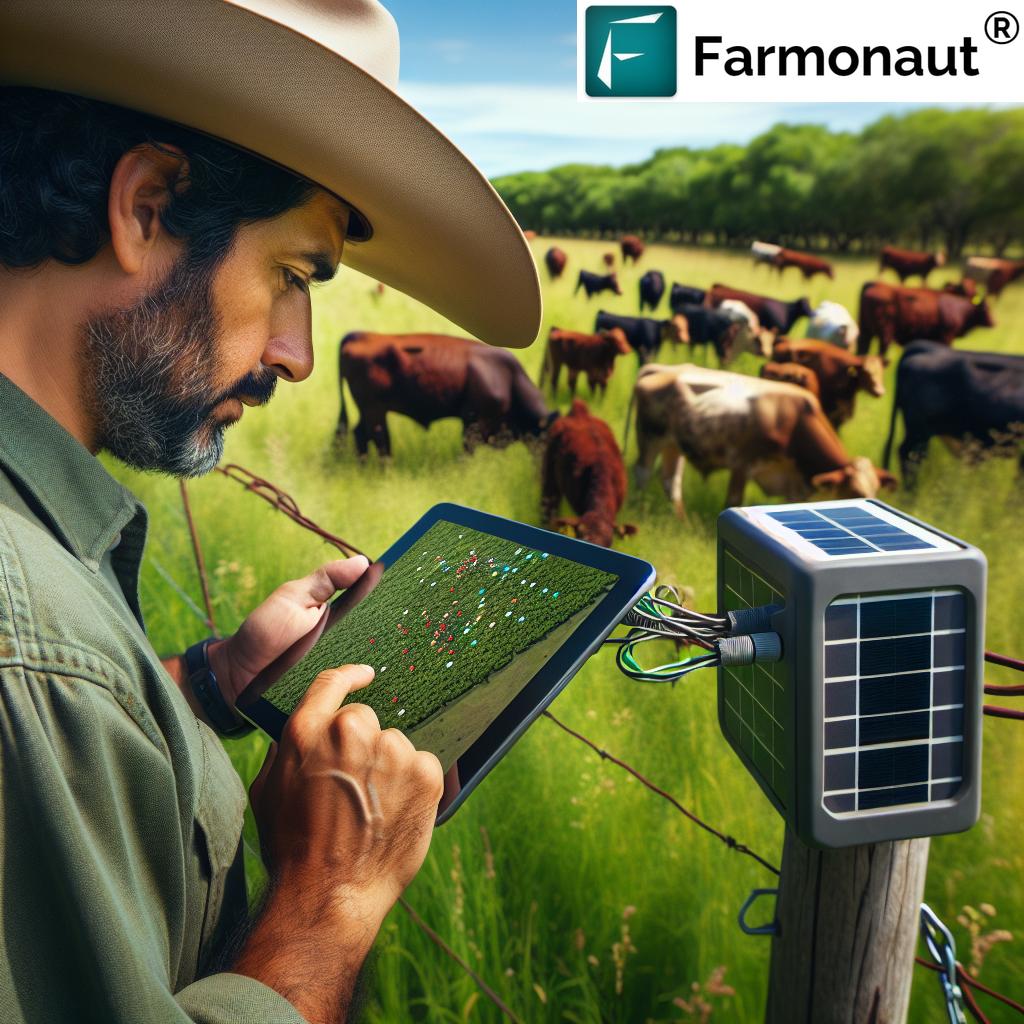
3. Innovative Fencing Solutions
Flexible fencing is key to adapting your rotational grazing system as needed. Farmonaut supports the implementation of modern fencing strategies by:
- Providing satellite data to plan efficient fence lines and gate placements
- Offering integration capabilities with GPS-based virtual fencing systems
- Helping you visualize and adjust paddock boundaries using our interactive mapping tools
Consider incorporating solar-powered farm fencing and single-strand hotwire systems for cost-effective and easily adjustable paddock divisions.
4. Smart Grazing Schedules
Timing is everything in rotational grazing. Farmonaut’s precision agriculture technology helps you create and maintain optimal grazing schedules by:
- Providing real-time vegetation health data (NDVI) to determine paddock readiness for grazing
- Offering AI-generated recommendations for grazing duration and rest periods
- Alerting you to weather patterns that may affect forage growth and grazing conditions
By leveraging these insights, you can make data-driven decisions about when to move your cattle, ensuring maximum forage utilization and pasture recovery.
Maximizing Sustainability with Precision Agriculture
“Implementing proper rotational grazing techniques can reduce feed costs by 30-40% for cattle farmers.”
Rotational grazing is not just about moving cattle between paddocks; it’s a holistic approach to sustainable ranching that benefits both your livestock and the environment. Here’s how Farmonaut’s precision agriculture tools can help you maximize the sustainability of your operation:
1. Soil Health Monitoring
Healthy soil is the foundation of productive pastures. Our satellite-based monitoring system allows you to:
- Track soil moisture levels across your ranch
- Identify areas prone to erosion or compaction
- Monitor the impact of grazing patterns on soil health over time
By understanding your soil’s condition, you can adjust your grazing plan to promote regeneration and prevent degradation.
2. Carbon Footprint Reduction
Farmonaut’s carbon footprinting tools help you measure and reduce your ranch’s environmental impact:
- Calculate your operation’s carbon emissions
- Identify opportunities for carbon sequestration through improved grazing practices
- Track progress towards sustainability goals
This data not only helps you become a more eco-friendly producer but can also open doors to carbon credit opportunities in the future.
3. Biodiversity Enhancement
Rotational grazing can significantly improve pasture biodiversity. Our precision ag tools support this by:
- Providing detailed vegetation analysis to identify diverse plant species
- Helping you plan grazing rotations that promote native plant growth
- Monitoring the impact of your grazing system on local wildlife habitats
By fostering a diverse ecosystem on your ranch, you create a more resilient and productive agricultural environment.
Ready to take your ranching operation to the next level? Explore Farmonaut’s suite of precision agriculture tools:
Advanced Techniques for Optimizing Your Rotational Grazing System
As you become more comfortable with the basics of rotational grazing, consider implementing these advanced techniques to further enhance your ranch’s productivity and sustainability:
1. Adaptive Multi-Paddock (AMP) Grazing
AMP grazing takes rotational grazing to the next level by closely mimicking natural grazing patterns of wild herds. This approach involves:
- Very short grazing periods (1-2 days) followed by long recovery periods
- High stock density to encourage even grazing and nutrient distribution
- Frequent moves between paddocks based on forage conditions
Farmonaut’s real-time vegetation monitoring can be invaluable in implementing AMP grazing, helping you make quick decisions about when to move your herd.
2. Multispecies Grazing
Introducing multiple livestock species to your grazing system can improve pasture utilization and control weeds more effectively. Consider combining cattle with sheep, goats, or even poultry. Our precision ag tools can help you:
- Analyze pasture composition to determine suitable species combinations
- Monitor the impact of different species on vegetation health
- Optimize paddock designs for multiple species
3. Seasonal Adaptive Management
Adjust your grazing plan throughout the year to match seasonal forage growth patterns. Farmonaut’s weather forecasting and vegetation analysis features support this by:
- Providing long-term weather predictions to help you plan for seasonal changes
- Tracking historical vegetation growth patterns on your ranch
- Offering AI-powered recommendations for adapting your grazing schedule to seasonal variations
Measuring Success: Key Performance Indicators for Rotational Grazing
To ensure your rotational grazing system is delivering results, it’s essential to track key performance indicators (KPIs). Farmonaut’s precision agriculture technology can help you monitor and analyze these important metrics:
1. Forage Production
- Measure biomass production using our satellite-based vegetation index (NDVI) data
- Track changes in plant species composition over time
- Compare forage yields between different paddocks and seasons
2. Soil Health
- Monitor soil organic matter content using remote sensing techniques
- Assess soil moisture retention capabilities
- Track changes in soil erosion risk
3. Livestock Performance
- Record and analyze weight gain rates
- Monitor herd health indicators
- Track reproductive performance
4. Economic Efficiency
- Calculate cost savings from reduced supplemental feed
- Analyze labor efficiency improvements
- Measure increases in stocking rates and overall ranch productivity
By consistently monitoring these KPIs, you can fine-tune your rotational grazing system for optimal performance and profitability.
Overcoming Common Challenges in Rotational Grazing
While rotational grazing offers numerous benefits, it’s not without its challenges. Here’s how Farmonaut’s precision ag tools can help you address common obstacles:
1. Drought Management
During periods of drought, maintaining a rotational grazing system can be challenging. Farmonaut’s tools support drought resilience by:
- Providing early warnings of impending drought conditions based on weather forecasts and soil moisture data
- Helping you identify paddocks with the most drought-resistant forage species
- Offering AI-powered recommendations for adjusting your grazing plan during dry periods
2. Parasite Control
Rotational grazing can help break parasite lifecycles, but careful management is key. Our precision agriculture technology assists by:
- Tracking paddock rest periods to ensure they’re long enough to reduce parasite populations
- Identifying areas of high moisture where parasites may thrive
- Helping you plan grazing rotations that minimize parasite exposure
3. Winter Grazing Strategies
Maintaining a rotational system during winter months presents unique challenges. Farmonaut’s tools support winter grazing by:
- Providing detailed topographical data to identify sheltered areas for winter paddocks
- Helping you plan stockpiled forage reserves based on vegetation health data
- Offering insights on snow cover and ground conditions to guide winter grazing decisions
The Future of Rotational Grazing: Emerging Technologies
As we look to the future, several exciting technologies are poised to further revolutionize rotational grazing practices. At Farmonaut, we’re continually exploring ways to integrate these innovations into our precision agriculture platform:
1. Virtual Fencing
GPS-enabled collars that create invisible boundaries for livestock, allowing for dynamic paddock management without physical fences. Farmonaut is developing integration capabilities with leading virtual fencing systems to seamlessly incorporate this technology into your grazing plans.
2. Drone-Based Pasture Monitoring
High-resolution, on-demand aerial imaging for detailed pasture analysis. We’re working on combining drone data with our satellite imagery to provide even more precise vegetation health assessments.
3. IoT Sensors for Real-Time Data
Networks of ground-based sensors providing real-time data on soil moisture, temperature, and other key metrics. Farmonaut plans to offer integration with these sensor networks to enhance our satellite-based monitoring capabilities.
4. Artificial Intelligence for Predictive Analytics
Advanced AI algorithms that can predict forage growth rates, optimal grazing times, and potential issues before they arise. Our Jeevn AI system is continually evolving to provide more accurate and actionable predictive insights for ranchers.
By staying at the forefront of these technological advancements, Farmonaut is committed to providing ranchers with the most comprehensive and effective tools for sustainable cattle production.
Conclusion: Embracing the Future of Sustainable Ranching
Rotational grazing, when implemented effectively, offers a powerful solution for sustainable cattle production that benefits both your bottom line and the environment. By leveraging Farmonaut’s cutting-edge precision agriculture tools, you can optimize your grazing system, improve pasture health, and boost overall farm productivity.
From satellite-based vegetation monitoring to AI-powered advisory services, our platform provides the data-driven insights you need to make informed decisions about your ranch management. As we continue to innovate and integrate new technologies, we’re excited to support ranchers in their journey towards more efficient, profitable, and environmentally friendly cattle production.
Ready to revolutionize your ranch with rotational grazing and precision agriculture? Explore Farmonaut’s solutions today and take the first step towards a more sustainable future for your cattle operation.
For developers interested in integrating Farmonaut’s powerful satellite and weather data into their own agricultural applications, check out our API and API Developer Docs.
Farmonaut Subscriptions
Frequently Asked Questions
Q: How does rotational grazing differ from continuous grazing?
A: Rotational grazing involves systematically moving cattle between smaller paddocks, allowing for controlled grazing and rest periods. This differs from continuous grazing, where cattle have unrestricted access to a large pasture area. Rotational grazing promotes better pasture recovery, improved forage quality, and more efficient land use.
Q: How can Farmonaut’s tools help me implement a rotational grazing system?
A: Farmonaut offers satellite-based vegetation monitoring, AI-powered advisory services, and farm planning tools that can help you design optimal paddock layouts, track pasture health, and make data-driven decisions about cattle movement and grazing schedules.
Q: What are the key benefits of using precision agriculture in rotational grazing?
A: Precision agriculture tools provide real-time data on pasture conditions, weather patterns, and soil health. This information allows for more accurate decision-making, leading to improved pasture productivity, better resource management, and ultimately, more sustainable and profitable ranching operations.
Q: How often should I move my cattle in a rotational grazing system?
A: The frequency of cattle movement depends on factors such as pasture growth rates, herd size, and paddock size. Generally, moves can range from daily to weekly. Farmonaut’s vegetation health monitoring can help you determine the optimal timing for moving your herd based on current pasture conditions.
Q: Can rotational grazing work for small-scale operations?
A: Yes, rotational grazing can be adapted to farms and ranches of all sizes. Even small-scale operations can benefit from dividing pastures into smaller paddocks and implementing a rotation system. Farmonaut’s tools can help you design an efficient grazing plan regardless of your operation’s size.






